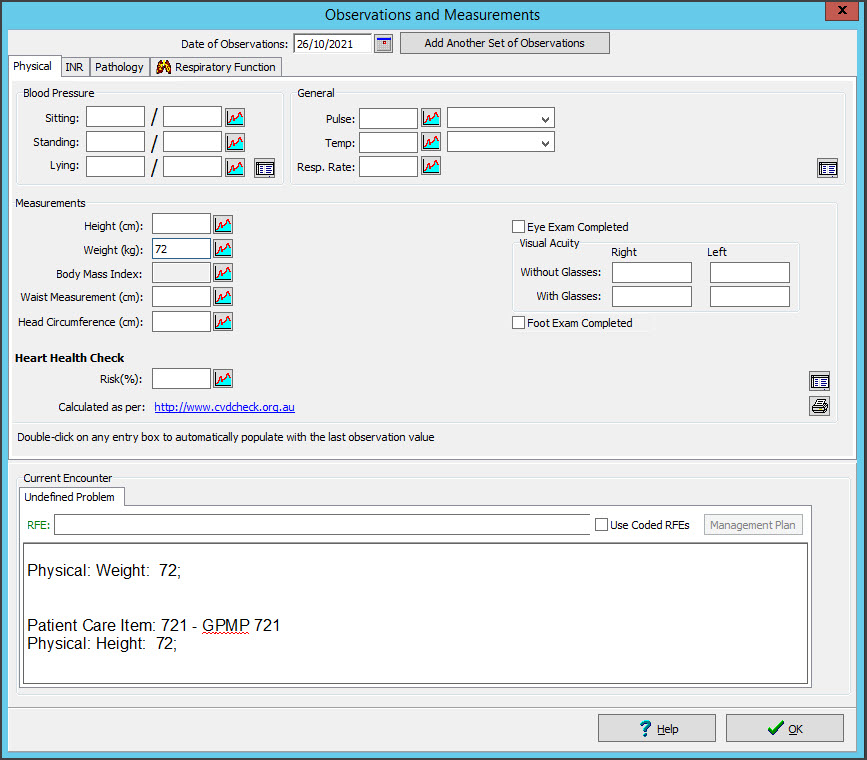Use the Observations module to record a patient's physical measurements. Entering this information allows you to monitor changes over time, and the module can display these changes graphically.
For other observation options, see INR measurements, pathology results and respiratory functions. You can also record 14 different examinations using the Templates module.
The Observations module can be used to:
- View measurements from earlier encounters by changing the Date of Observations field.
- Enter backdated results by changing the Date of Observations field before entering the data.
- Update past measurements and results using the Summary Views.
Recording Measurements
To record physical measurements:
- Start an encounter with the patient.
For a detailed explanation of how to do this, see the Start an encounter article.
When the encounter starts, the Current Encounter menu will open and display the clinical modules. - Select Observations from the Current Encounter menu.
 The Observations and Measurements screen will open, with the Physical tab selected by default.
The Observations and Measurements screen will open, with the Physical tab selected by default. - If the measurements were taken prior to the encounter, change the Date of Observations field to the appropriate date.
- Use the fields provided to record the observations.
Graphs & Tables
Select the graph icon next to a measurement to display the results over time.
Current Encounter notes
Use the Current Encounter section at the bottom to record additional clinical notes.
Heart Health Check
This section provides a link to a cardiovascular calculator, which is used to calculate the risk. Enter the result into the field provided. - To record another set of observations, select the Add Another Set of Observations button at the top.
This saves the current observations and clears the fields so you can enter more. You can use the same date again or select a different date using the Date of Observations field. - Select OK to save and exit.
The results will be saved to the History View. When you refresh, they will also appear in Summary Views under Measurements.
Child growth (WHO)
In the Physical tab's Measurements section, the graphs have a Graph Type for WHO 0-2 Years, which displays the length, weight and head circumference chart for children 0-2 years old. This is useful for Paediatricians

Current Encounter field
When you enter measurements, they are added to the Current Encounter field at the bottom of the Observations and Measurements screen. When you close the Observations module, you can still change this information in the clinical notes field, shown in the screenshot below under Undefined Problem.
History View
Once the consultation is closed, the information in the Current Encounter notes is added to the History View. You cannot edit the information in the History View, but you can right-click the date of the consultation, select Add further Notes and add an addendum.


 The Observations and Measurements screen will open, with the Physical tab selected by default.
The Observations and Measurements screen will open, with the Physical tab selected by default.